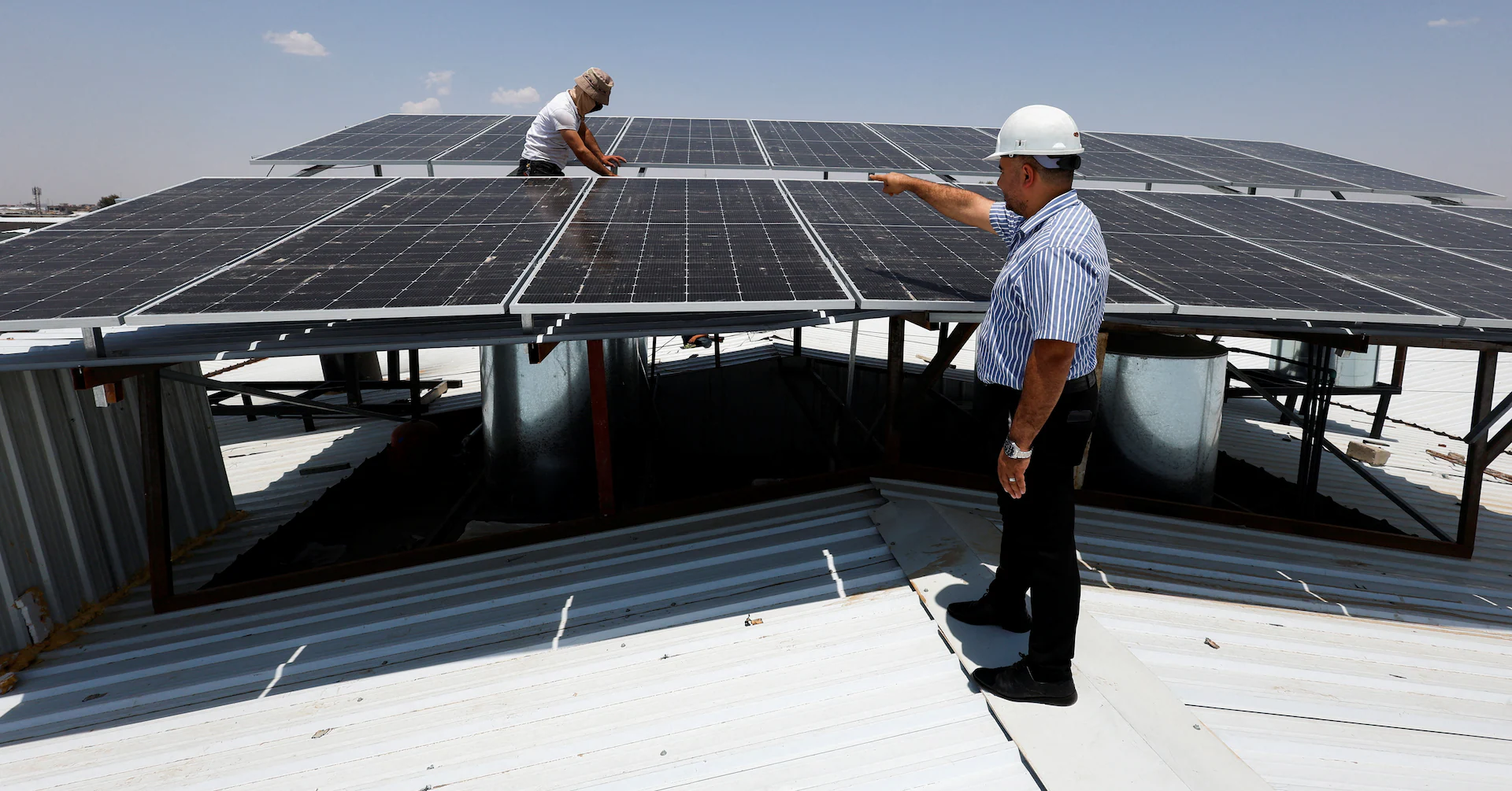Copyright Reuters

LITTLETON, Colorado, Nov 12 (Reuters) - Global power generation capacity is on track to expand by just over 25% once projects that are currently under construction are completed and steer power onto generation systems and electricity grids. Around 1,450 gigawatts (GW) of new power capacity is currently under construction globally, which when complete will lift the world's power capacity footprint from 8,000 GW to nearly 9,500 GW, data from Global Energy Monitor (GEM) shows. Sign up here. Two-thirds of current projects are from clean energy sources such as solar and wind farms, while coal-fired plants make up the majority of the fossil fuel capacity pipeline. Regionally, Asia accounts for a vast majority of nearly all planned capacity additions, while the Americas are the location for the second-largest amount of capacity construction currently underway. Below is a breakdown of the power pipeline currently being built in terms of power source and geography, and how the final power generation mix will be impacted once new projects come online. CLEAN BREAK Of the roughly 950 GW of clean power capacity being built, solar farms account for the largest share, with around 345 GW of new solar capacity currently under construction. Hydropower capacity is the next largest clean power technology being built, with around 267 GW under construction, followed by wind farms with around 251 GW. In addition, around 82 GW of new nuclear, 7.5 GW of new bioenergy and 1.8 GW of new geothermal capacity is also in the construction phase. Currently, clean power sources account for around 46% of total power capacity in operation, but following the completion of the clean-heavy construction pipeline, clean power sources will account for 49% total power capacity, GEM data shows. FOSSIL FUEL MOMENTUM While clean power sources account for 66% of the power capacity under construction, a third of the global power pipeline being built will be powered by fossil fuels. Indeed, coal-fired power is the second-largest generation source globally being built behind solar, with around 275 GW currently under construction. An additional 215 GW of gas-fired power capacity is also being built, which will result in total fossil fuel generation capacity climbing from around 4,326 GW currently to around 4,815 GW when projects are complete. The fossil fuel share of global generation capacity - which is currently around 54% - will decline to 51% after all clean and fossil fuel capacity construction is complete. ASIA-DRIVEN Asian nations are the main builders of new power capacity, with roughly 84% of all new power projects currently under construction located in the region. Asia is home to around 83% of all clean energy projects and 85% of all fossil fuel projects being built, which is a testament to the scale of China's mammoth energy needs and its manufacturing heft in energy components. When it comes to coal-fired power capacity, Asia's share jumps to 99% of the global pipeline, while 68% of all new gas-fired capacity being built is also in Asia. Once projects that are currently under construction are complete, Asia's share of global power capacity will rise from around 53% currently to 58%, GEM data shows. Around 65% of all new power capacity in Asia will be powered by clean energy, and when complete will lift Asia's power capacity mix from around 37% clean, 63% fossil fuels currently to 44% clean, 56% fossil fuels. The Americas, which currently account for 23% of power capacity in operation, will see its share decline to 21% when projects are complete. The Americas power capacity mix, which is currently split fairly evenly between clean and fossil fuel sources, will shift to 51% clean, 49% fossil fuels once current construction work is finished. Europe's share of global power capacity will fall from 19% to 17% once all global construction work is complete, while the continent's clean share of total power capacity will remain largely flat at around 68%. Africa and Oceania will continue to have a roughly 4% share of global power generation capacity after current work is complete. Africa's clean-fossil fuel capacity breakdown will shift from 28% clean, 72% fossil fuels currently to 33% clean, 67% fossil fuels once construction is complete. Oceania's generation mix will move from a fairly even clean-fossil fuel mix currently to 54% clean, 46% fossil fuels mix once current construction projects are wrapped up. The opinions expressed here are those of the author, a columnist for Reuters. Reporting by Gavin Maguire; Editing by Christian Schmollinger Our Standards: The Thomson Reuters Trust Principles., opens new tab Opinions expressed are those of the author. They do not reflect the views of Reuters News, which, under the Trust Principles, is committed to integrity, independence, and freedom from bias.



